I expected many things of Buenos Aires, Argentina’s sprawling capital, but I didn’t expect it to be quite so grand. It’s a city of epic public buildings, grand mansions, wide boulevards and generous public squares.
Perhaps I’d been put off the scent by all the economic traumas, dictatorships, persecutions and politically-motivated murders that Argentina has had to deal with over the last century. But despite them, Buenos Aires today is a friendly place, has great style and swagger and is easy to fall in love with, at least those parts that us tourists tend to visit. Elsewhere of course it has great poverty, grim housing, other social problems and pollution to deal with. It’s too reliant on cars, is vast and can be ugly but at least it feels like it’s heading in the right direction.
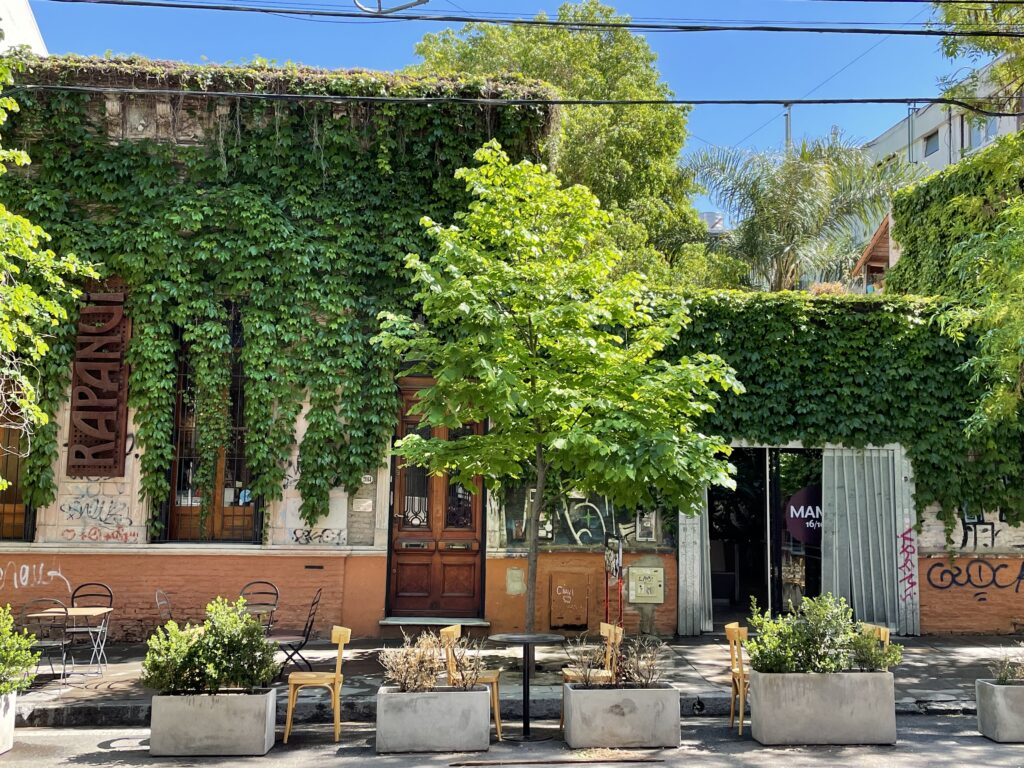
We spent a week in the city, staying in the heart of Palermo in a quaint old town house that’s now the Magnolia Boutique Hotel. Spring had arrived and there was a fresh, vivid green to the trees that line so many of the district’s streets, and residents were once again congregating in the city parks and squares. Children played in large numbers in the playgrounds. People walked their dogs, leaving copious amounts of shit scattered across some of the most uneven pavements anywhere in the world. They sat outside bars drinking Malbec and snacked on delicious empanadas (think tastier, mini Cornish pasties). Of an evening they gorged on steaks so large they looked like were tackling half a cow.
Palermo is one of the trendy districts, a bit like London’s Shoreditch, with great street art, craft beer bars, boutiques and the latest restaurants. It’s colourful, safe and buzzes at night when all and sundry flock in from around and about. We hung around there every evening, often in the streets that fan out from Plaza Immigrante de Armenia, eating a range of cuisines from Argentinean to Japanese and Italian, sometimes drinking local brews, reds or a crisp white Torrentes. We cursed our inability to speak much Spanish in a country where English isn’t common.

BA is packed with museums and attractions but we much prefer to wander the streets to get a proper feel for the place, linger over lunch and people watch. The city boomed late in the 19th and early 20th centuries and that’s reflected in its buildings and furniture, which reflect the neo-classical, art nouveau and Art Deco of the times. It’s impossible not to be drawn in by the elaborate doors, windows and doorknobs in wood, brass and steel of apartment blocks, town-houses and mansions in Palermo, Recoleta and many other districts besides. Many are works of art.
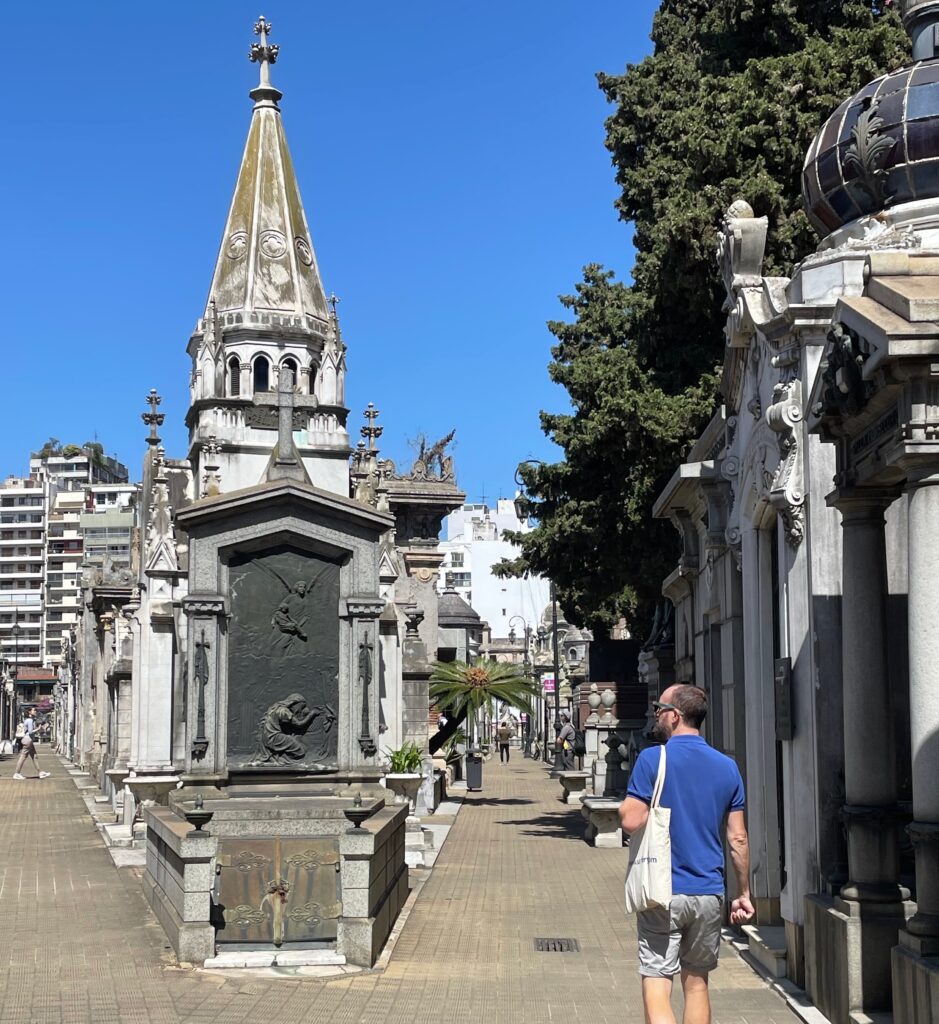
Having said that, there are things to do and places to go that just cannot be missed wherever you go. Chief among them in BA is the Recoleta Cemetery, a city of the dead in the wealthy Recoleta district where the great and good of Argentina past and present slowly rot away amid the extravagance. It’s a weird but fascinating place, where street after street of money-is-no-object mausoleums point to an obsession with death and the supposed afterlife that I find positively unhealthy. I peered curiously into tombs where dusty coffins and urns lay untouched by time and focused on the architecture, in particular the art nouveau and neo-classical touches that feature on so many of the buildings. There are some stylish modernist examples too. Some of the buildings and fittings are crumbling, the coffins lurching precariously, evidence perhaps that family have died out, run out of money or forgotten their ancestors. First Lady Eva Peron is one of those ‘buried’ here and her family mausoleum, hidden away off the main drag, is in tip-top condition and was the only one with much of a crowd.
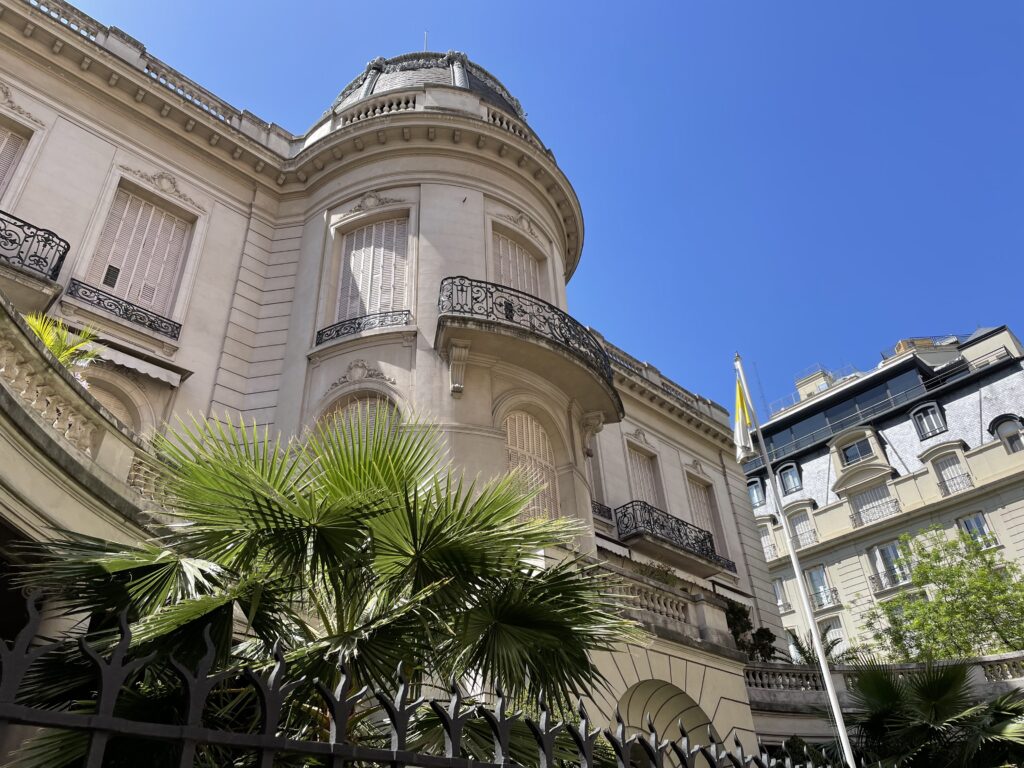
Around Recoleta are posh streets such as the Avenida Alvear and numerous handsome squares, often dominated by truly giant Ficus trees with buttress-like tree roots. We stopped at the historic cafe La Biela, now a shadow of its former self with disinterested staff serving average fare, but it overlooks one such tree – the famous Gomero de la Recoleta. This is over 200 years old and some of its branches are now propped up to stop them collapsing. Later we explored more of Recoleta, finding embassies, statues, grand hotels and museums, but also the unusual brutalist Biblioteca Nacional Mariano Moreno, which sits on stilts and looks a bit careworn.
It’s difficult in BA not to come across references to Eva Peron and her husband Juan, sometimes in graffiti, others in more formal public art. The president and his wife did much of their gesticulating and orating in Plaza de Mayo during the 1940s and 50s. It’s a grand city square named after the 1810 revolution that led to Argentina’s independence and is home to such grand buildings as the Cathedral, the presidential rose-coloured Casa Rosada and the former town hall building, the historic Cabildo. But it’s also dominated by too much traffic, flocks of pigeons and numerous police (they’re everywhere in BA and drive round with lights flashing regardless of whether there’s an emergency or not). The old Cabildo houses a small museum about the revolution that is mildly diverting.
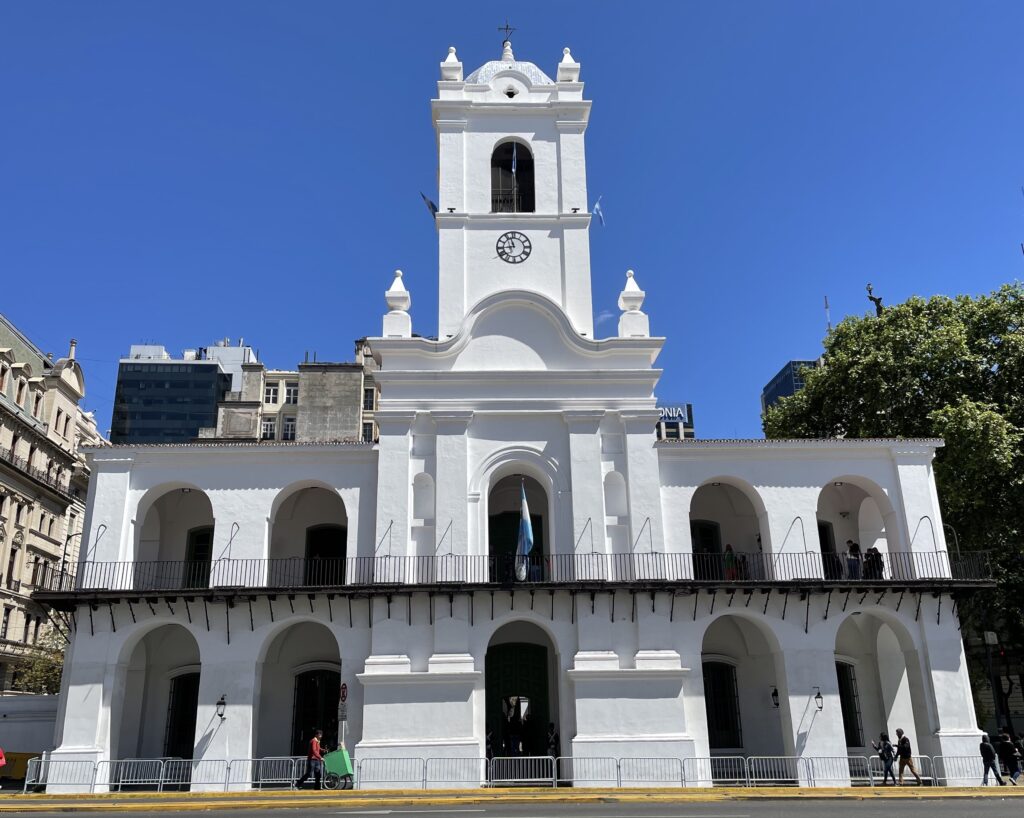
To the west, in the Belgrano district, is the somewhat more modest Museo Larreta in the former home of writer Enrique Larreta. It houses his art collection and temporary exhibitions although the interiors are also interesting, and the main reason Graham wanted to go. There’s a lovely garden too, full of the heady scent of jasmine, and we lingered for a while on the Monday of our stay when there was precious little else open despite the claims of our guide book. We ended up zipping around on the subway from one place to another that day, because BA is so large, and getting increasingly dispirited. We tried to go to the Japanese Garden in the Palermo district but the queue to get in was so long we gave up. However, it sounds like we didn’t miss much – people we met later in the holiday told us it was rammed with tourists and more like a Disney cliche.

The Japanese garden is part of a wider green lung in the city dominated by the Parque Tres de Febrero, a popular spot with locals and visitors alike. Nestled within it, a wonder of 1960s design and looking like a squat alien spacecraft, is the Galileo Galilei planetarium. We walked on past a lake, the inevitable joggers, locals lazing in the sun and numerous dog-walkers to the Paseo El Rosedal Garden, a rose garden in the English style with pergolas and bed after bed of colourful, occasionally scented blooms. Further south is the site of the city’s old zoo, now being converted into the Eco Parque. Many of the zoo’s historic buildings have been retained but appear to be redundant, which is a bit odd, and there are far fewer animals than there once were. Those that remain have a lot more freedom to roam. Notably, there are Patagonian mara (distant relatives of our domesticated guinea pigs) that wander freely, grazing all around. The park’s focus now is on creating natural habitats with a better environment for the animals it wishes to keep, but it was difficult to get a feel for the place as so much is still fenced off and being reworked.
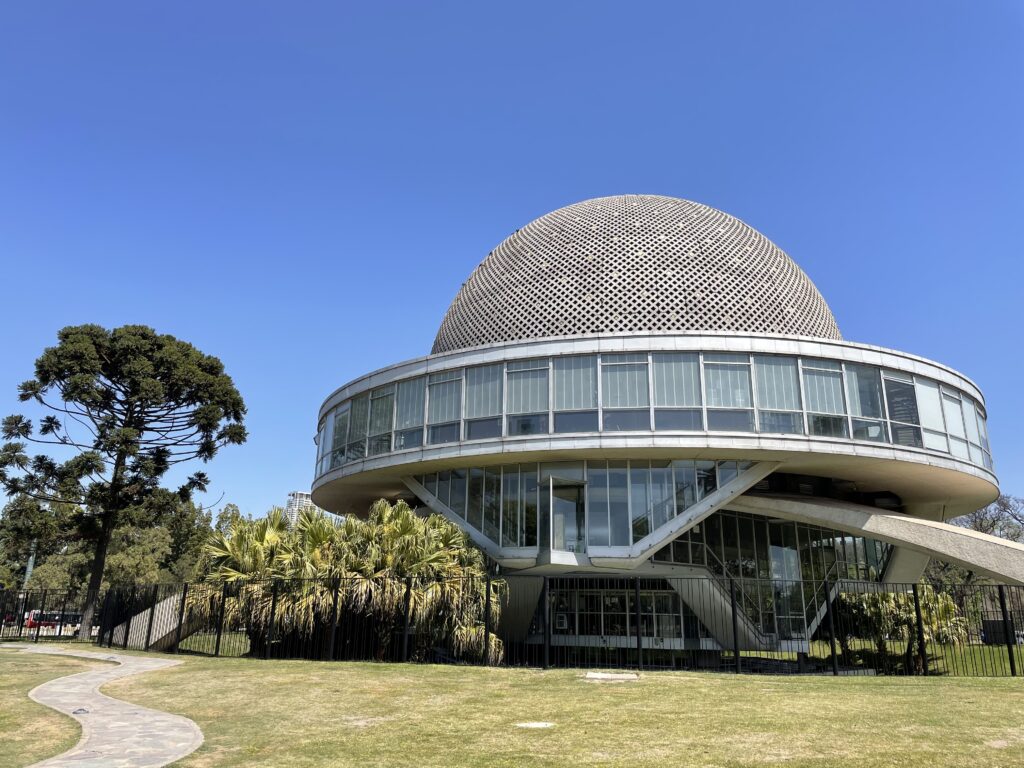
Further on still is the Jardin Botanico Carlos Thays, a modest botanical garden that’s never going to rival Kew but provides plenty of shade on a hot day.
On another day we visited the early 20th century Palacio Paz in the posh Retiro district, built by a newspaper magnate in a grand French style. Today it houses the Military Officers’ Association but many of the old residential rooms have been left for visitors to explore on a tour. Our guide didn’t speak much English but we got the idea and she revealed the real marvel at the end, a spectacular circular entrance hall with masses of marble and a stained glass cupola. It was clearly designed to show all and sundry just how important Mr Paz thought he was…
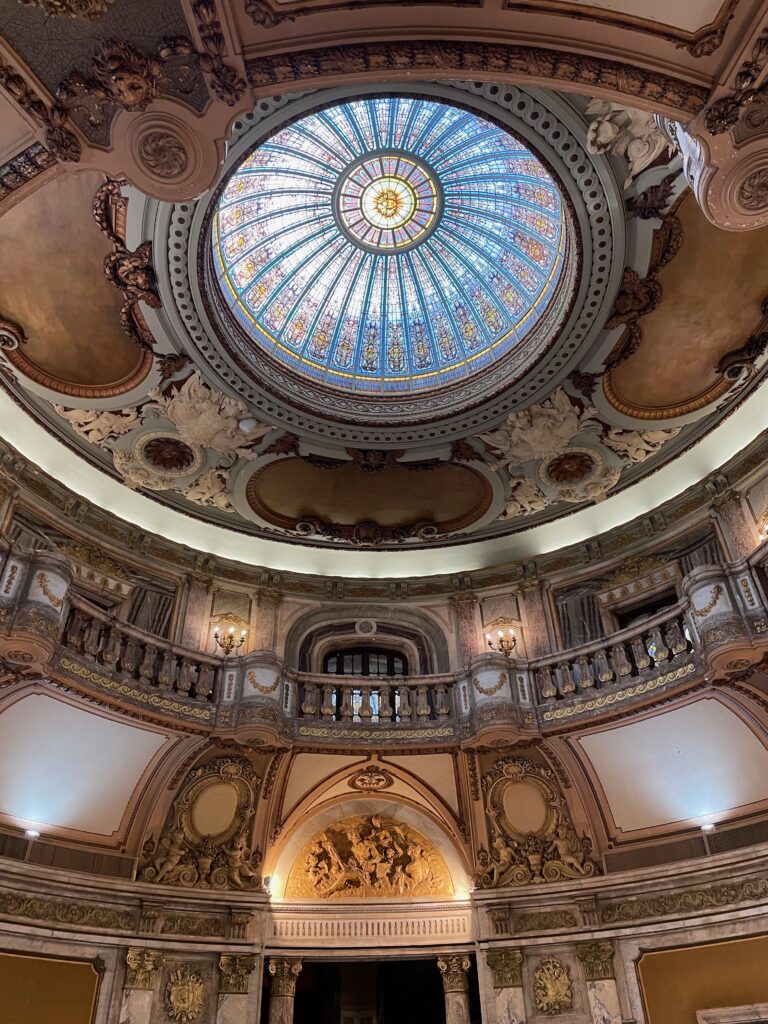
The Palacio Barolo in the nearby Montserrat district was designed as offices rather than residential and is still in use today. Close to the Plaza del Congreso, which in turn is dominated by the neo-classical Parliament building, the Barolo was built by an Italian immigrant who’d grown rich in the textile trade and its design reflects Dante’s Divine Comedy. We went on a hugely expensive bilingual tour that overdid the Dante connection but otherwise proved well worth it, riding period lifts, exploring original offices and finally climbing steps to the top of what was South America’s tallest building on completion in 1923. The views are amazing on high but we found ourselves cooped up in a tiny lighthouse at the highest point – a mildly disconcerting experience when all around is glass and a long drop to the ground below.
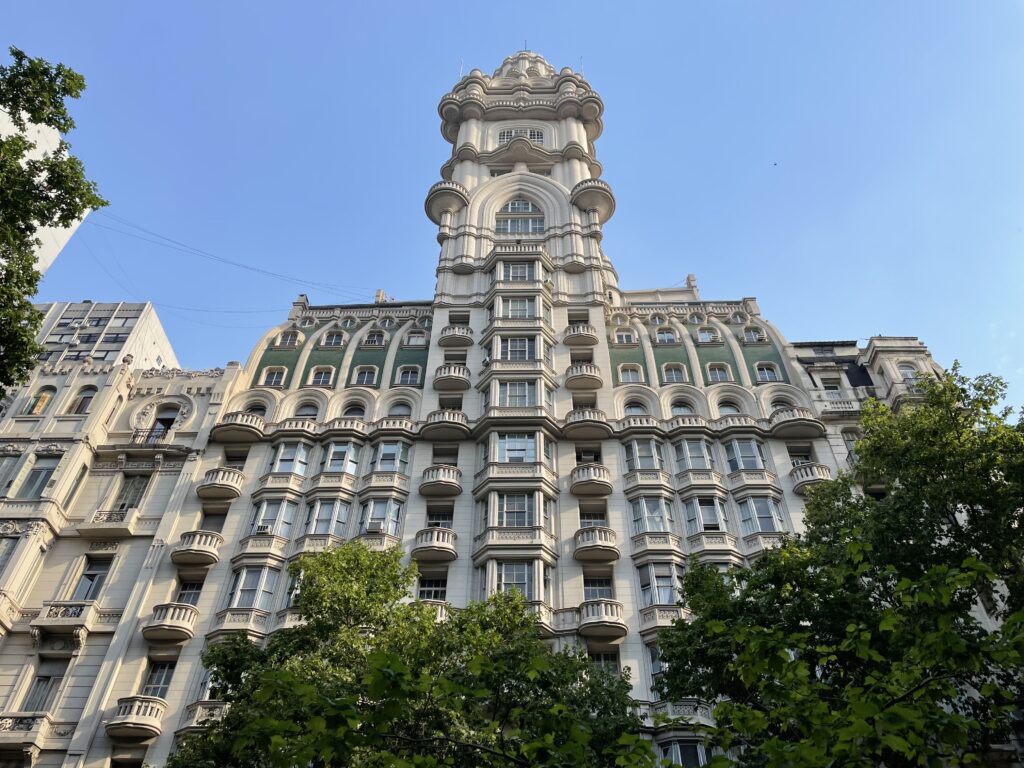
Further south is one of BA’s most photogenic streets, the Caminito in the old port neighbourhood of La Boca. Buildings in the neighbourhood are painted in bold primary colours, in contrast to the grey poverty of the area, and tour groups flock up and down the streets with phones poised. It’s horrendously touristy and money grabbing, with touts desperate to get you into their restaurants while store after store sells fridge magnets and other shit, so we wandered about briefly, noting some of the older, rougher spots and an old rail line, and then went to the Museo Benito Quinquela Martin on the waterfront. Atop a busy school, it was home to the 20th century artist who documented this once busy industrial port and neighbourhood in atmospheric, colourful paintings and who played a key role in bringing all that colour to La Boca. The tour includes his old rooms, where he lived and worked, and a rooftop platform with great views over the old port, the famous football stadium and the neighbouring districts.

We left Buenos Aires for stops in Iguazu and Salta but returned for a final stay in the San Telmo district, one of the oldest of the city’s neighbourhoods and with a very different feel to, say, Palermo or Recoleta. The streets are narrower and cobbled, many of the buildings older. It feels a bit more cramped and working class, run-down in parts, but buzzes with life day and night. On Sundays it hosts an enormous market that runs down Defensa from Plaza de Mayo in the north to Plaza Dorrego in the south, attracting thousands who can peruse everything from food to antiques, pots and pans to jewellery. But those numbers meant it was impossible to get into Mercado San Telmo, the indoor food market that has stalls selling everyday essentials as well as a range of eateries. We went back several times when it was quieter and ate some truly great food tapas-style, including on our last night.

We left for our trip back to Britain the next morning, our British Airways A350 taking us on the long haul home via Sao Paolo. It was a wrench to leave the city, but what about the elephant in the room? As a Brit, it’s impossible not to visit Argentina without contemplating the issue of the Falkland Islands (Islas Malvinas). Fewer than 40 years before our stay the two countries were at war over them and today there are reminders of Argentina’s claim over the Malvinas throughout the country, on roadside signs and other slogans. But did anyone we met mention them? Not one. And I was more than happy about that. We’ll leave all that to the politicians.

